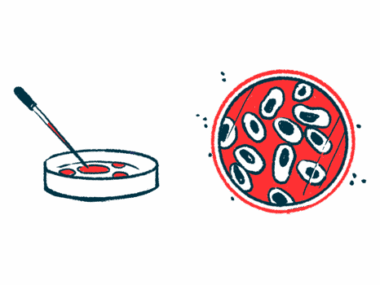New Mutations Found in Children With Recessive DEB in Vietnam
Written by |

Three new mutations in the COL7A1 gene and five very rare variants were identified for the first time in children with recessive dystrophic epidermolysis bullosa (DEB) in Vietnam, a study reported.
These findings expand “the spectrum of COL7A1 mutations” and may have implications for the genetic counseling of patients and their families, and in predicting likely disease progression, its scientists said.
The study, “Novel and very rare causative variants in the COL7A1 gene of Vietnamese patients with recessive dystrophic epidermolysis bullosa revealed by whole-exome sequencing,” was published in the journal Molecular Genetics & Genomic Medicine.
DEB is a type of epidermolysis bullosa (EB), a group of rare diseases that cause the skin to be extremely fragile and prone to tearing and blistering. Types of EB are characterized depending on the layer in which the blisters form. In DEB, blistering occurs below the lamina densa, a component of the basement membrane that keeps the epidermis and dermis layers connected. Mutations in the COL7A1 gene, which encodes for a key structural skin protein called type VII collagen, cause all types of DEB.
Using whole-exome sequencing (WES), a relatively time- and cost-efficient technique that sequences only the parts of the genome that code for protein, scientists searched for potentially harmful mutations or genetic variants in six EB patients.
These patients, all Vietnamese children from five families, and their parents — who were not near relatives (not consanguine) and clinically healthy — were recruited at the Hanoi Medical University Hospital. The children ranged from 1 month to 15 years old, and had mechanobullous lesions on the skin with blistering and scarring.
The first patient was a 4-year-old boy with moderate blisters and scarring throughout his body. He also had contracted toes and damaged nails. WES revealed he had a homozygous COL7A1 variant (c.8279G>A), meaning he inherited a mutated gene copy from both his mother and father.
The second was an 8-year-old girl, who had severe blistering on the left side of her face and pseudosyndactyly, a condition in which fingers and toes appeared “fused” by a membrane. Genetic testing identified a compound heterozygous variant of COL7A1, as she had one type of mutation (c.6081delC) in one gene copy, and a different type of mutation — c.2858_2859del — in the other.
Both variants were premature termination codon (PTC) mutations, which introduce an early stop in type VII collagen production. The analysis also showed that the child inherited c.6081delC from her mother and c.2858_2859del from her father.
A 1-month-old baby girl was the third patient. She had blisters on her hands, feet, and inside the mouth. Two brothers, ages 7 (patient four) and 15 (patient five), had similar severe symptoms, as well as scarring, dry skin, and finger and toenail loss. All three children had compound heterozygous variants of COL7A1, including a PTC variant.
Patient six had milder manifestations, with lesions in the lower back and groin. Her genetic analysis also confirmed a compound heterozygous of COL7A1.
These findings were in line with previous studies showing that PTC mutations typically resulted in the most serious cases, the scientists noted. Accordingly, patients one and six had relatively milder symptoms compared with the other children examined.
Each parent carried one mutated copy of COL7A1, and had no symptoms. As such, their children were identified as having recessive DEB, where the disease develops because each of the two COL7A1 gene copies inherited has a disease-causing mutation.
“This is the first report on mutational screening of DEB patients in Vietnam, providing an important genetic variant spectrum for Vietnamese EB. To sum up, our study had identified three novel mutations (p.G2760E, c.4518+2delT, and c.5281-2A>G) and five very rare variants,” the scientists wrote.
“The results of the molecular tests would be valuable for appropriate genetic counseling and providing a theoretical prognosis for the progression of the disease,” they added.





